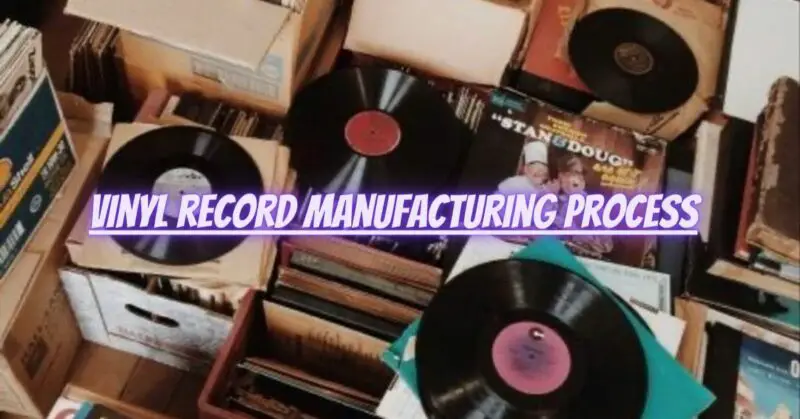The vinyl record manufacturing process is a fascinating journey that transforms raw materials into the cherished musical medium loved by audiophiles and music enthusiasts worldwide. With its distinct warmth and analog sound quality, vinyl records have made a remarkable comeback in recent years. In this article, we will take a closer look at the vinyl record manufacturing process, from the initial stages of raw material preparation to the final pressing and packaging of the records.
- Vinyl Compound Preparation: The manufacturing process begins with the preparation of the vinyl compound, which is the material used to create the record. Vinyl compound is typically a mixture of polyvinyl chloride (PVC), plasticizers, and other additives. These ingredients are blended together to achieve the desired consistency and quality for pressing vinyl records.
- Mastering and Lacquer Disc Creation: The audio content for the record is transferred to a master lacquer disc through a process called mastering. Mastering involves fine-tuning the sound, adjusting dynamics, and adding any necessary equalization or mastering effects. The lacquer disc is coated with a thin layer of lacquer, onto which the audio is engraved using a lathe cutter.
- Electroplating: Once the lacquer disc is prepared, it undergoes the electroplating process. The disc is placed in a bath where it is electroplated with a layer of metal, usually nickel, which forms a negative image of the audio groove. This electroplated disc becomes the “stamper” that will be used for pressing multiple records.
- Vinyl Record Pressing: The pressing stage is where the vinyl records come to life. The vinyl compound is heated and melted, forming a puck-shaped piece of vinyl known as a “biscuit.” The biscuit is placed between the two stampers—one positive and one negative—and placed in a hydraulic press. The press applies high pressure and heat to the biscuit, shaping it into the familiar vinyl record shape while simultaneously transferring the grooves from the stamper. The pressing process typically takes a few seconds.
- Trimming and Center Hole Punching: After pressing, the vinyl records go through a trimming process to remove excess material from the edges, resulting in the final round shape. The center hole, where the record spindle fits, is also punched during this stage.
- Quality Control and Inspection: The freshly pressed records undergo a thorough quality control and inspection process to ensure their sound quality and visual integrity. This includes visual checks for any physical defects or imperfections, such as warping, scratches, or blemishes. Sound checks may also be performed to detect any audible flaws or playback issues.
- Labeling and Packaging: Once the records pass the quality control process, they are ready for labeling and packaging. Labels are applied to each side of the record, containing the album artwork, tracklist, and other relevant information. The records are then placed in inner sleeves for additional protection, and the inner sleeves are usually housed within an outer jacket or gatefold cover. The final packaged records are typically shrink-wrapped or sealed for distribution and sale.
Conclusion: The vinyl record manufacturing process is a meticulous journey that combines artistry and technology. From the preparation of the vinyl compound to the pressing, trimming, and packaging stages, each step is crucial in producing the beloved vinyl records that have captured the hearts of music enthusiasts. Understanding the manufacturing process provides a deeper appreciation for the craftsmanship and dedication that goes into creating these sonic artifacts. Whether it’s the warmth of the vinyl, the beauty of the album artwork, or the joy of the physical experience, vinyl records continue to captivate listeners, carrying forward the legacy of analog sound in a digital age.


